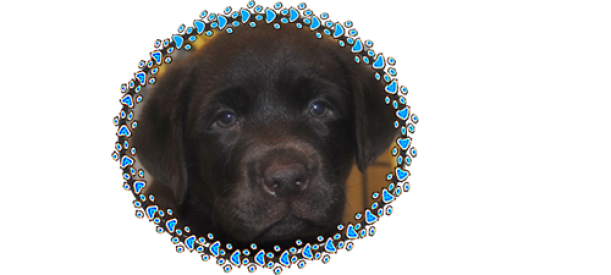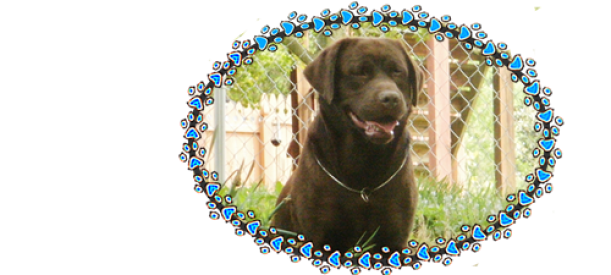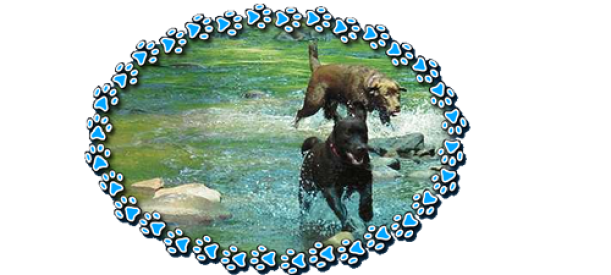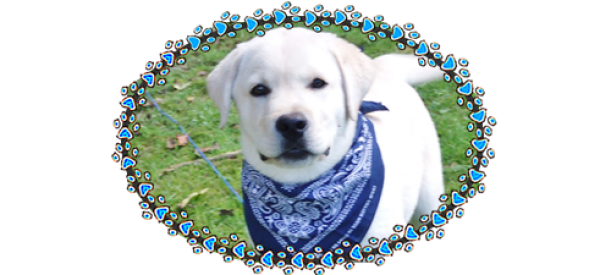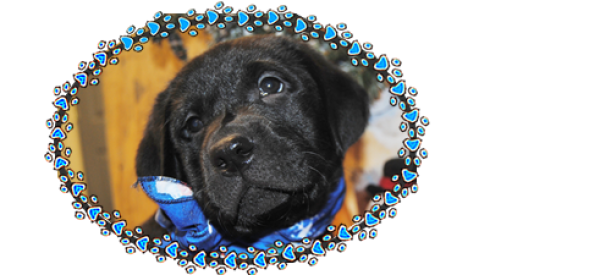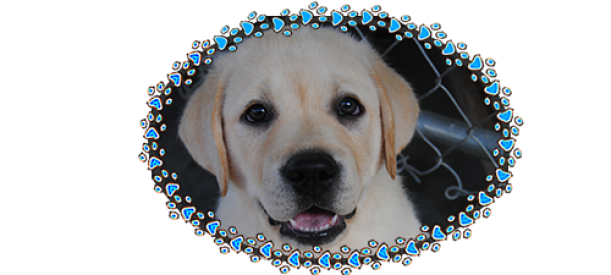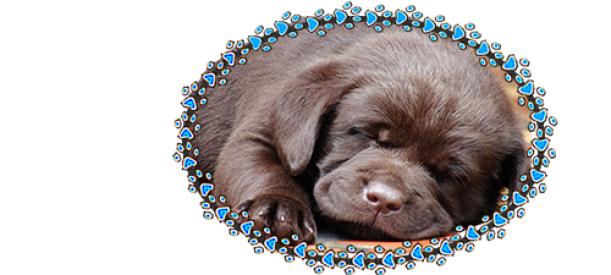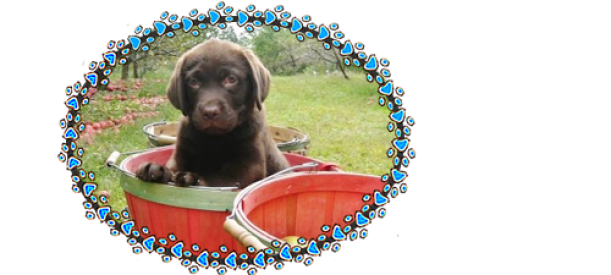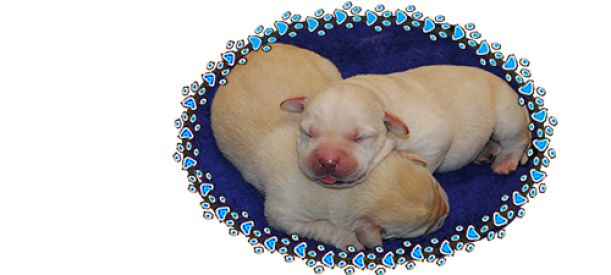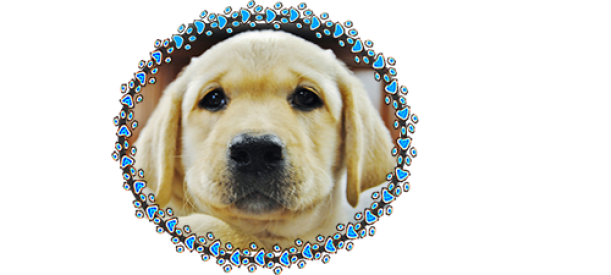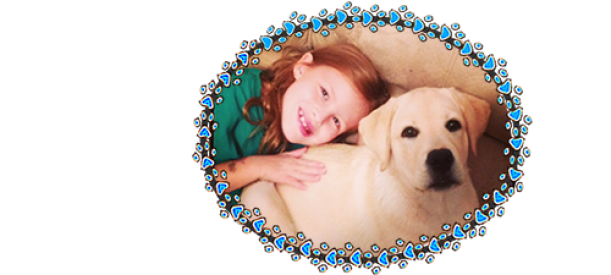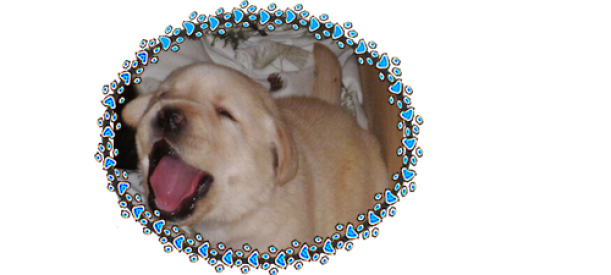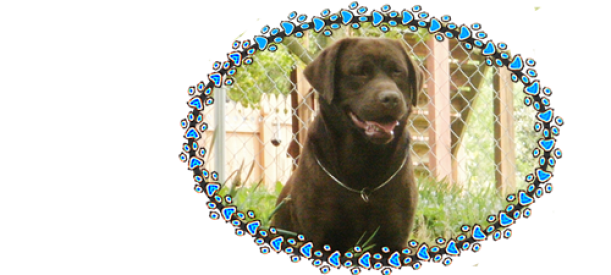
How often, and what do I feed my new puppy?
Your new puppy will have three scheduled feedings each day when he/she goes to its new home. Your veterinarian will determine when to switch to a twice-a-day schedule. For a puppy, the first year of nutrition is critical for his growth and development. During this time, your puppy needs the best possible nutrition to provide strong bones and teeth. When you pick up your puppy from North Fork Labradors, we will give you the information you need as to how much, and what type of food to feed your new puppy.

How and When Do I Start Trimming My Puppy's Nails?
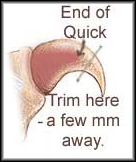 Keeping your puppy’s nails trimmed to the proper length is essential to his/her health and comfort. However, when a pet’s nails need to be trimmed, the right equipment is essential. Specialized trimmers are available from your pet shop and veterinarian. I always use a nail trimmer with a “safety stop bar”.
Keeping your puppy’s nails trimmed to the proper length is essential to his/her health and comfort. However, when a pet’s nails need to be trimmed, the right equipment is essential. Specialized trimmers are available from your pet shop and veterinarian. I always use a nail trimmer with a “safety stop bar”.
The object of nail trimming is to trim the end of the nail without touching the quick growing through the center. If the nail bleeds, you have gone too far as your pet will confirm!
Starting young prevents nail trim terror. Train it to accept nail trims at an early age by allowing it to sniff and explore the trimmer long before the nails are trimmed. I recommend just trimming the tip of the nail to get them used to the process. When your puppy’s nails are beginning to curve, clicking on the floor or getting snagged in the carpet, it is time for a pedicure.
If your puppy is on hard surfaces, walked frequently it helps to wear down the nails and eliminates trimmings.

Can Common Plants Be Poisonous To Dogs?
Yes, many houseplants and landscape plants can be poison to your dog. The Poinsettia which is a favorite at Christmas time is poisonous to your dog.
The APCC identifies the top 10 most common poisonous houseplants and landscape plants dog owners should avoid:
Autumn crocus (Colchicum): Its active ingredient, colchicines, triggers an anti-metabolic effect that can cause rapidly dividing cells, shedding of the gastrointestinal tract, bloody diarrhea and vomiting.
Azalea (Rhododendron): This popular plant can harm a dog's cardiovascular system and trigger vomiting or gastrointestinal upset.
Daffodil (Narcissus): Toxic ingredients in the bulbs cause convulsions, tremors, lethargy, weakness, and upset stomachs.
Hyacinth (Hyacinth): This popular plant can cause severe vomiting, bloody diarrhea, depression, and tremors.
Japanese yew (Taxis): Extremely toxic to dogs, this group of ornamental plants can cause seizures or cardiac failure. The plant and red berries are toxic.
Lily of the valley (Convalaria): This plant can cause heart failure, coordination problems and vomiting.
Oleander (Nerium): Extremely toxic, this popular outdoor plant contains cardiac glycosides that harm the heart, decrease body temperature, cause abnormal pulse rate, and can cause death.
Rhubarb (Rheum): Although the stalks are used to make pies, the leaves pack the potential to cause kidney damage.
Sago palm (Cycads): Resembling an upside down pineapple, this plant thrives in sandy soils, especially in warmer states such as California, Texas, and Florida. A few seeds can kill a dog.
Tomato (Lycopersicion): Surprisingly, the greenery of this common plant, not the tomato itself, contains solanine, a toxic ingredient that can prompt gastric upset, depression, weakness and a decrease in heart rate.
Some parting advice: Keep your dog away from any mushrooms. Always assume any ingested mushroom by a dog is toxic and will cause liver failure, says the APCC. The problem is that many poisonous mushrooms often grow together with non-poisonous mushrooms.



